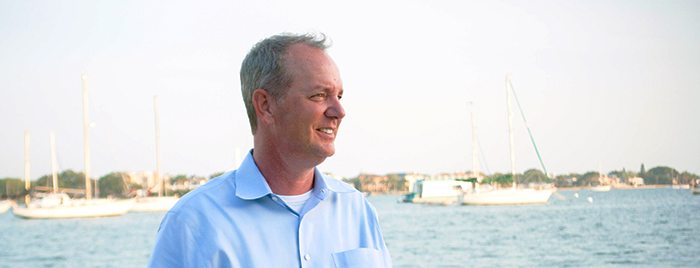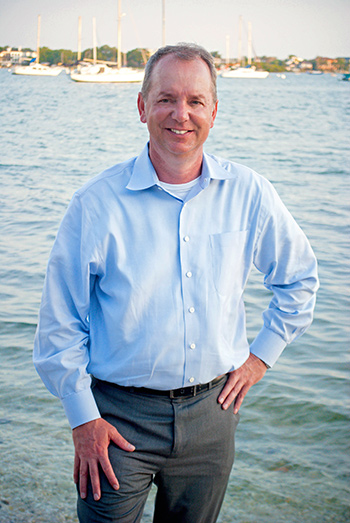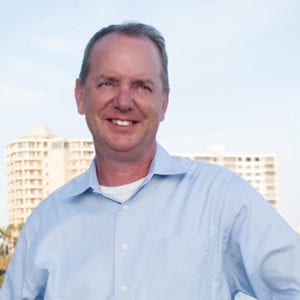Providing financial acumen to help clients plan for the future
Providing financial acumen to help clients plan for the future

That starts with trying to understand where people have been in their financial lives, their attitudes about money, risk tolerance, and their goals and objectives. Many new clients will ask if they should bring all of their financial statements, brokerage account information, insurance documents, and so forth, to our first meeting. I tell them no, just bring yourself and your spouse. We want to have a conversation to get to know each other and to get the important issues out on the table. We will dig deeply into the specifics as we work through the planning process, but the informal information gathering is critically important.

I find that clients respond well to starting our relationship in this manner. I tell clients that I am interviewing to become their lifetime financial coach and that means being transparent with each other, even if some of the discussion can be difficult. All financial advisors basically have access to the same types of tools and a lot of the same resources, but the ability to build a trusting relationship is what creates a successful team. My role is to make sure I can bring those tools and resources to bear knowing the relevant facts and having a good understanding of the client’s mindset and attitudes. Only then can I become an effective financial coach, delivering the strategic options and recommendations that are most suitable for their personalized situation.
I frequently advise clients to think about the distribution phase of their life differently than the asset-accumulation phase. Whether someone worked for themselves or for a large corporation, the minute they retire they have to start writing their own paycheck. An individual usually has a far more limited pool of assets than a company to write that paycheck.
I explain the concept of needs versus wants when discussing retirement, and have some fun doing so, comparing it to what I used to tell my young children when they asked for one too many toys. Once we can work with a client to make sure their needs are covered via a conservative income plan, we can then start discussing strategies for further growth of their assets. Here is where we get back into their aspirations and try to determine their priorities moving forward. Is it providing a legacy for their children, funding education for grandchildren, giving to charities or church, or purchasing a dream retirement home? Once we have solved for the income piece, we try to address these aspirational goals. Nothing makes me happier than helping clients build a plan that can help them address both their needs and their wants.
The positive flip side is that I never want a client to be in a position where we have to decide that they need to cut back on their income withdrawals because they experienced a big hit to their portfolio. That is just not an acceptable outcome, and we will do everything in our power to avoid it. We want to try to take the ups and downs of the market out of the income distribution equation. The idea is that controlled portfolio growth and income-producing investments will continually refill their income bucket each year, keeping them ahead of the game throughout their retirement years.
 A critical piece of that question is identifying each individual client’s risk profile. I do that on a disciplined, quantitative basis and probe their emotional attitudes toward investments. How did they feel in the past when they saw attractive returns in their portfolio? How did they feel when they experienced losses of 20% or 30%? How did they react during the two great market downturns this century—whether they were working with an advisor or not?
A critical piece of that question is identifying each individual client’s risk profile. I do that on a disciplined, quantitative basis and probe their emotional attitudes toward investments. How did they feel in the past when they saw attractive returns in their portfolio? How did they feel when they experienced losses of 20% or 30%? How did they react during the two great market downturns this century—whether they were working with an advisor or not?
We know that as strong as the market has been, we will see a large market displacement again. We need clients to prepare for that. And, given their attitude toward risk, their goals-based objectives, and the type of investment plan we have constructed, we might manage risk differently for different elements of their plan. I do not like labeling clients as conservative, moderate, or aggressive. People have different pockets or buckets of money that may be earmarked for different objectives and different time horizons. Risk might be managed very differently for different objectives.
For the money that needs to be preserved and provide conservative growth over many years, I favor an active investment approach. When I first started in the business, and for several years after, I was in the camp of passive, long-only, buy-and-hold investing. My mantra to clients in times of stress was “hold on and ride the wave.” That might work for young people who have many years until they have to touch their investments, but it is not going to work well for clients ready for retirement.
New technologies and investment managers using quantitative strategies have become much more available to investment advisors and the average client investor. We now have access to sophisticated, proactive strategies that can stay in tune with market conditions and are not bound to classic long-only, fully-invested strategies. Buy-and-hold, I tell clients, works until it doesn’t. And then your portfolio can end up in very poor shape, sometimes causing emotional reactions that work against you in the long run.

The other major point I emphasize with clients is that being proactive and managing risk are not just confined to their investment portfolios. I am strongly committed to periodic client review sessions, where we talk about their investment plan, its performance, and also changes in their life situation. People face change throughout their lives, and I think it is the role of a good financial advisor to make sure that their plan evolves along with their life circumstances. This approach, I believe, serves clients well over the long term.
 Cliff Aiken is a vice president and wealth advisor at AWA Investment Advisors, located in Port Charlotte, Florida. He has been helping people pursue their financial goals since 1994. Mr. Aiken says the key to his success is the personalized approach he takes in assisting clients with services such as retirement planning, estate planning, financial planning, and portfolio management. His clients include high-net-worth individuals, small-business owners, and retirees.
Cliff Aiken is a vice president and wealth advisor at AWA Investment Advisors, located in Port Charlotte, Florida. He has been helping people pursue their financial goals since 1994. Mr. Aiken says the key to his success is the personalized approach he takes in assisting clients with services such as retirement planning, estate planning, financial planning, and portfolio management. His clients include high-net-worth individuals, small-business owners, and retirees.
A graduate of East Tennessee State University, where he studied business and finance, Mr. Aiken has held a variety of positions within the financial-services industry. He has served as a financial advisor, worked in real estate and mortgage financing, and was regional director of wealth management for a large bank in the southern U.S.
Outside of work, Mr. Aiken is dedicated to volunteering in the community. He has coached youth soccer for more than 15 years and has also been a leader for the Boy Scouts of America.
Mr. Aiken lives in Sarasota, Florida, where he enjoys “the great weather and proximity to the beach.” He has a son in middle school and a daughter who works as a client coordinator at his firm. He says that all members of the family are outdoor enthusiasts and enjoy camping, hiking, kayaking, and biking. Mr. Aiken says he also “loves to travel, explore new places, and meet new people.”
Disclosure: Securities offered through LPL Financial, member FINRA/SIPC. Investment advice offered through Independent Financial Partners (IFP), a registered investment advisor. AWA Investment Advisors and IFP are separate entities from LPL Financial.
No strategy assures success or protects against loss. There is no guarantee that a diversified portfolio will enhance overall returns or outperform a nondiversified portfolio. Diversification does not protect against market risk.
Post-publication note: As of this update (April 2021), Mr. Aiken is affiliated with Private Advisor Group LLC.
Photography by Juleah Aiken

